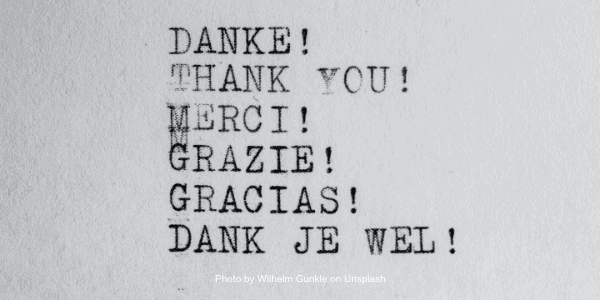We’re Celebrating 10 Years of Weekly Thoughts (WT520)
Blog

Do you ever surprise yourself?
Wow! This week I’m celebrating. Never in my wildest dreams did I think that I could commit to writing a Weekly Thought, EVERY WEEK FOR 10 YEARS.
I have to say I’ve surprised myself.
I’m also really happy with myself and I’m proud of my achievement, and more importantly, I am GRATEFUL.
I am grateful that you have been on this journey with me, whether we’ve just met or you’ve been here since the beginning.
THANK YOU for being there.
I love receiving your feedback, especially when a thought resonates with you.
I love my community and I just love sharing what I learn.
You see, I can’t help myself.
Years ago, I studied with Cristi Cooke who developed The Pillars of Genius program to help entrepreneurs look at marketing from a different perspective. Cristi helped us to identify what it is that is unique about us; the things that we cannot not do and to use this to help potential customers decide if we’re the person or company they want to work with. In essence, you attract customers who are the same as you or completely opposite and therefore needing what you have to offer or anywhere in between. The point being, you get to choose who you want to work with and the customer gets to choose based on who you or your company are in addition to the services you offer.
My 4 Pillars are:
1. Learn Learn Learn | Teach Teach Teach (I can’t help myself. I’m always learning and growing and recently, I added up how much I have invested in my own personal growth, business training, leadership training and the like and it was over $500,000. What that means for you is that you don’t have to invest the time, the travel costs or the program expenses to get exactly what you need at the right time. That’s what I can offer you.)
2. Systems Set You Free (I love designing and developing systems to take away the stress of being in chaos and disarray. Over the past 14 years I’ve developed my own 5 Step System to help business owners streamline their operations. It’s part of my DNA. It’s something that comes easily to me. My clients tell me I make the complex simple.)
3. Don’t Tell Me. (I have to admit, I’m a bit of a rebel. I hate being told what to do. I don’t mind asking for help, but please don’t assume you know what I want and tell me how to do something or what I should do. That’s why I won’t tell you what you should do. You know you best, and you know what you want and why you want it. My job is simply to help you get it and support you along the way.)
4. Fascinated by How People Tick. (I think this is fairly obvious from my Weekly Thoughts. I’m always watching and analysing and doing my best to understand people and then help others to understand their people. I find myself constantly working with leaders and business owners helping them to understand themselves and their people and how best to communicate with them.)
So how about you? What are your Pillars of Genius?
What are the things you cannot NOT do?
As Cristi says, “What are things that you would be confident to stand in front of a judge and jury and show all the evidence from your life and work?”
And of course, this week I learned something new from Gretchen Rubin. Gretchen created The 4 Tendencies. According to Gretchen, one of the daily challenges of life is: “How do I get people—including myself—to do what I want?” The Four Tendencies framework makes this task much easier by revealing whether a person is an Upholder, Questioner, Obliger, or Rebel.
You can find out here. It’s a free Quiz and will take you less than 5 minutes.
Let me know what you are.
No surprises for me, I’m an Obliger. I’ll do things for you before I’ll do them for myself.
10 GLORIOUS YEARS. WOW! WOW! WOW! I’m excited.
I invite you to celebrate with me.










